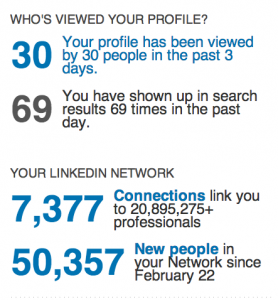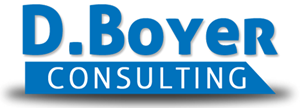Business is mostly conducted via email or phone communications.
Office hours 10:00 a.m. to 6:00 p.m, Mon. - Thurs., and 10:00 a.m. to 2:00 p.m. on Fridays.
SEND EMAIL INQUIRIES DIRECTLY TO:
Dawn.Boyer@me.com
Business is mostly conducted via email or phone communications.
Office hours 10:00 a.m. to 6:00 p.m, Mon. - Thurs., and 10:00 a.m. to 2:00 p.m. on Fridays.
SEND EMAIL INQUIRIES DIRECTLY TO:
Dawn.Boyer@me.com
Business is mostly conducted via email or phone communications.
Office hours 10:00 a.m. to 6:00 p.m, Mon. - Thurs., and 10:00 a.m. to 2:00 p.m. on Fridays.
SEND EMAIL INQUIRIES DIRECTLY TO:
Dawn.Boyer@me.com
8 LinkedIn First-Time User Mistakes
July 1st, 2013 by Dawn Boyer
8 LinkedIn first-time user mistakes.
LinkedInNewUserMistakes
(Click the link above to listen to the podcast.)

Make sure your LinkedIn Profile is rich, completed to 100%, with correct spelling, punctuation, and grammar to demonstrate your professionalism
LinkedIn is now becoming the norm for job seekers to post profiles as well as recruiters looking for and using the ‘inexpensive’ platform as a sourcing tool. Recruiters are just as discriminatory on what they see on profiles, as they would be in reviewing resumes. Those using LinkedIn for the first time can be in a rush, make minor or major mistakes, and don’t realize they have set themselves up for failure. Here are a few mistakes that can be easily corrected and will assist job seekers in getting the attention more easily from headhunters.
1) Type a full name and initials in mixed upper and lower case for name and profile information. Typing your name in all lower case demonstrates laziness, lack of education, or that English is not your primary language. Assume the profile is your resume. Would you send a resume to a recruiter with all lower case text?
2) Fail to check your LinkedIn account at least weekly for messages. How many recruiter messages have you missed because you haven’t checked the in-box for urgent messages from recruiters who found your profile and want to chat?
3) Never revisiting the profile. Many sign up for an account then never go back because they don’t know what to do with the LinkedIn platform. You must explore the tabs, get professional training, read a book or ask others what more you can do. The free version is one of the most valuable job search tools you can access.
4) Don’t realize what a tremendous data-mining tool LinkedIn is for job seekers or business developers. Type in a company name and you’ll get a listing of hundreds of employees or past employees names, and in many cases their direct POC data. If you don’t ask, you won’t get, information about the company, work environment, names of hiring managers, etc., are easy to get if you simply reach out and ask.
5) Incomplete profiles for users. The character length for most of the text boxes in a profile are huge and can provide a ‘story’ about capabilities, if written properly. Don’t waste the white space – write about your accomplishments to the fullest capability. Use bullets to make the text easily readable. Don’t ignore the options for bragging about current projects, publications, recognitions and awards, as well as membership in trade groups. These tell a more complete story about you.
6) Filling in only a few skill sets for your profile. You are allowed to ‘brag’ about 50 skills you have to shop to future employers. If you haven’t added all 50 skills, you risk unrelated to your career skills to be added by complete strangers or the LinkedIn system. This section is critical because LinkedIn uses it as the SEO for your profile.
7) Groups are underutilized. One can join up to 50 groups, and add up to 50 sub-groups in a LinkedIn profile. These allow users to reach out in the community, industry, and trades to interact, have conversations, and data-mine for more information. Not joining all your available groups is wasting precious commodities.
8) Not understanding LinkedIn is an International social media for business professionals. The majority of users of LinkedIn are outside the United States (only ~40% are US users). This expands the visibility of a profile and capabilities to a larger recruiting target market. Be visible to a company headquartered in Canada, Germany, or Japan that needs a US representative for a unique job skill? Make sure job skills come up on their radar screen when querying for job candidates.
LinkedIn is one of the best social media platforms on the Internet for job seekers and business development. Joining is an important factor, but enriching your profile with vital information about your skills and capabilities is the second most important factor. Don’t treat it like a ‘toy’ – do put the effort into it to make it the best ‘resume profile’ you can for your career. Recruiters do study your professionalism in your profile and make the same type of decisions they do while studying your resume.
Dawn Boyer is the owner of D. Boyer Consulting – a career services coach, social media management, human resources and business development consultant. She can be reached at Dawn.Boyer@DBoyerConsulting.com or https://dboyerconsulting.com for resume writing services, LinkedIn training, or career social media management.
Readers Comments
8 LinkedIn First-Time User Mistakes
July 1st, 2013 by Dawn Boyer
8 LinkedIn first-time user mistakes.
LinkedInNewUserMistakes
(Click the link above to listen to the podcast.)

Make sure your LinkedIn Profile is rich, completed to 100%, with correct spelling, punctuation, and grammar to demonstrate your professionalism
LinkedIn is now becoming the norm for job seekers to post profiles as well as recruiters looking for and using the ‘inexpensive’ platform as a sourcing tool. Recruiters are just as discriminatory on what they see on profiles, as they would be in reviewing resumes. Those using LinkedIn for the first time can be in a rush, make minor or major mistakes, and don’t realize they have set themselves up for failure. Here are a few mistakes that can be easily corrected and will assist job seekers in getting the attention more easily from headhunters.
1) Type a full name and initials in mixed upper and lower case for name and profile information. Typing your name in all lower case demonstrates laziness, lack of education, or that English is not your primary language. Assume the profile is your resume. Would you send a resume to a recruiter with all lower case text?
2) Fail to check your LinkedIn account at least weekly for messages. How many recruiter messages have you missed because you haven’t checked the in-box for urgent messages from recruiters who found your profile and want to chat?
3) Never revisiting the profile. Many sign up for an account then never go back because they don’t know what to do with the LinkedIn platform. You must explore the tabs, get professional training, read a book or ask others what more you can do. The free version is one of the most valuable job search tools you can access.
4) Don’t realize what a tremendous data-mining tool LinkedIn is for job seekers or business developers. Type in a company name and you’ll get a listing of hundreds of employees or past employees names, and in many cases their direct POC data. If you don’t ask, you won’t get, information about the company, work environment, names of hiring managers, etc., are easy to get if you simply reach out and ask.
5) Incomplete profiles for users. The character length for most of the text boxes in a profile are huge and can provide a ‘story’ about capabilities, if written properly. Don’t waste the white space – write about your accomplishments to the fullest capability. Use bullets to make the text easily readable. Don’t ignore the options for bragging about current projects, publications, recognitions and awards, as well as membership in trade groups. These tell a more complete story about you.
6) Filling in only a few skill sets for your profile. You are allowed to ‘brag’ about 50 skills you have to shop to future employers. If you haven’t added all 50 skills, you risk unrelated to your career skills to be added by complete strangers or the LinkedIn system. This section is critical because LinkedIn uses it as the SEO for your profile.
7) Groups are underutilized. One can join up to 50 groups, and add up to 50 sub-groups in a LinkedIn profile. These allow users to reach out in the community, industry, and trades to interact, have conversations, and data-mine for more information. Not joining all your available groups is wasting precious commodities.
8) Not understanding LinkedIn is an International social media for business professionals. The majority of users of LinkedIn are outside the United States (only ~40% are US users). This expands the visibility of a profile and capabilities to a larger recruiting target market. Be visible to a company headquartered in Canada, Germany, or Japan that needs a US representative for a unique job skill? Make sure job skills come up on their radar screen when querying for job candidates.
LinkedIn is one of the best social media platforms on the Internet for job seekers and business development. Joining is an important factor, but enriching your profile with vital information about your skills and capabilities is the second most important factor. Don’t treat it like a ‘toy’ – do put the effort into it to make it the best ‘resume profile’ you can for your career. Recruiters do study your professionalism in your profile and make the same type of decisions they do while studying your resume.
Dawn Boyer is the owner of D. Boyer Consulting – a career services coach, social media management, human resources and business development consultant. She can be reached at Dawn.Boyer@DBoyerConsulting.com or https://dboyerconsulting.com for resume writing services, LinkedIn training, or career social media management.










